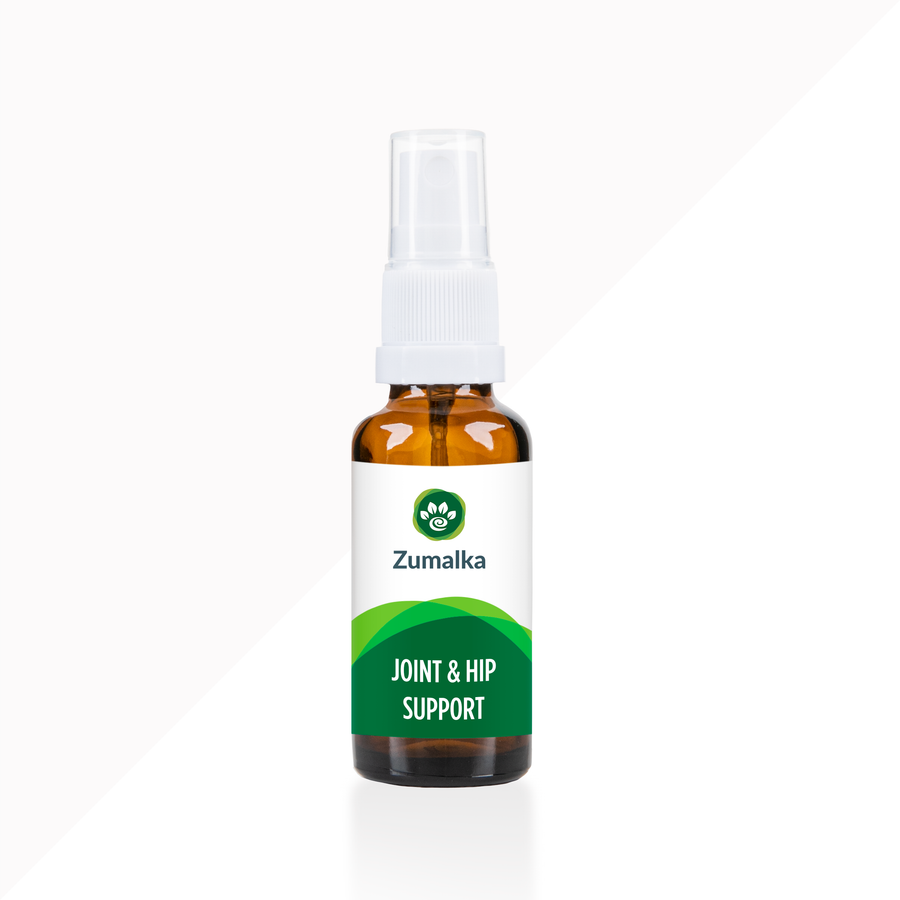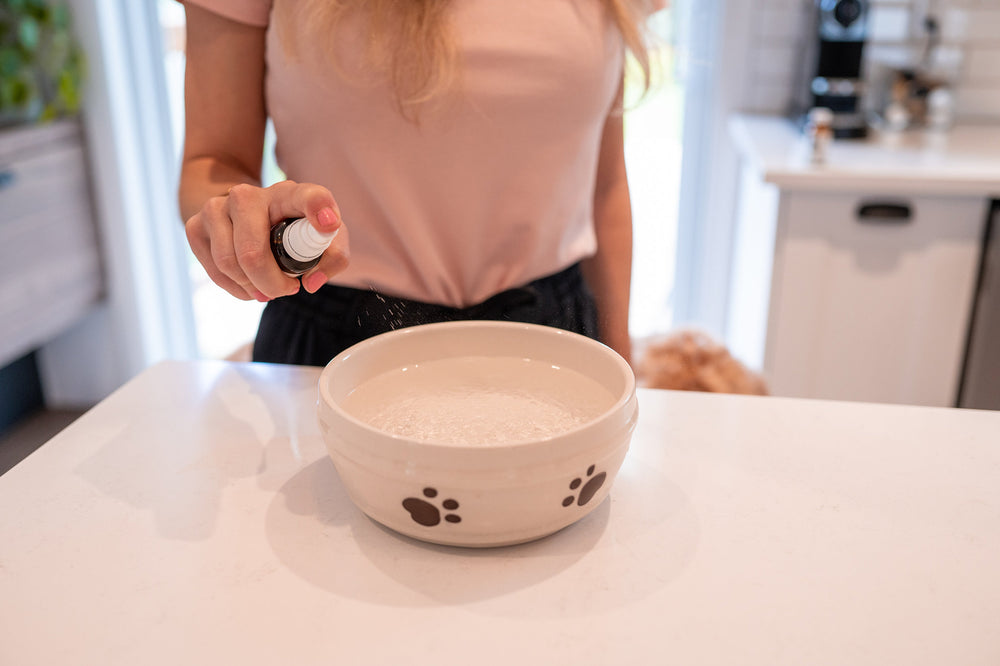11 Vet-Approved Tips to Keep Your Senior Beagle Active & Happy
List of Contents
- Safe Exercise Basics for Your Senior Beagle’s New Routine
- Low-Impact Exercise for Senior Beagles: Boost Joint Health Safely
- Mental Stimulation for Senior Beagles: Prevent Cognitive Decline and Boredom
- Consistency and Positive Reinforcement for Success in Aging Beagles
- Why Being a Senior Can Be Stressful for Beagles
- The Crucial Link Between Exercise, Diet, and Weight Management in Senior Beagles
- The Bottomline
- FAQs
As dogs age, they often become less active, spending more time resting due to stiffness, pain, or low energy. But regular, gentle exercise is essential for keeping your senior Beagle’s joints healthy and their spirits high.
Beagles are especially prone to obesity, which can worsen age-related conditions like osteoarthritis, a painful joint disease affecting 80% of dogs over eight. Helping your senior Beagle stay active is one of the best ways to manage weight and ease discomfort.
Adapting your senior Beagle’s exercise routine to their age and abilities is essential for long-term health and comfort. With the right approach, gentle activity can add years to their life and life to their years.
Safe Exercise Basics for Your Senior Beagle’s New Routine

Exercising your senior Beagle safely starts with low-impact, age-appropriate movement that protects their joints and supports overall health. A thoughtful routine can improve mobility, prevent injury, and help your dog stay active longer.
#1. Check with a professional first.
Always consult your veterinarian before starting a new exercise routine with your senior Beagle to rule out any underlying health issues. For a more holistic approach, a certified pet homeopath can offer additional support tailored to your dog’s age and condition.
Your veterinarian can confirm whether an exercise plan is safe and recommend a suitable starting point based on your senior Beagle’s condition. Bi-annual vet visits are essential to monitor for age-related issues like arthritis, heart disease, and hypothyroidism.
#2. Start slow and be very patient.
Start your senior Beagle’s exercise routine slowly, especially if they’ve lost muscle mass or haven’t been active in a while. Even short, gentle sessions can rebuild strength over time. Any movement is better than none.
Gradually increase your senior Beagle’s exercise time and difficulty only after observing consistent improvement. In their later years, moderate activity is ideal. Strenuous exercise can lead to injury or fatigue.
#3. Monitor vigilantly for pain and discomfort.
Closely monitor your senior Beagle for any signs of pain or discomfort during and after exercise. Common warning signs include stiffness, limping, reluctance to walk, trouble lying down or getting up, excessive joint licking, and unusual fatigue.
Early detection of these issues helps prevent further injury and ensures their routine remains safe and supportive. If your senior Beagle shows any signs of pain or discomfort, stop the activity immediately. Consult your veterinarian to adjust their exercise plan and prevent further strain or injury.
Low-Impact Exercise for Senior Beagles: Boost Joint Health Safely
Low-impact exercise is essential for maintaining your senior Beagle’s joint health without putting unnecessary strain on their aging body. With the right activities, you can improve mobility, reduce stiffness, and support a more active, comfortable life.
#4. Focus on gentle, effective ways to build strength without straining joints.
Low-impact exercise is a key part of keeping your senior Beagle active while protecting their joints. Gentle activities like slow walks or swimming can ease stiffness, support joint health, and promote a better quality of life.
Swimming is one of the best low-impact exercises for senior Beagles, offering a full-body workout without stressing the joints. It helps maintain mobility, build muscle, and reduce stiffness, making it ideal for aging dogs with arthritis or joint issues.
#5. Go for short, frequent walks.
Short, frequent walks are one of the most effective ways to keep your senior Beagle active without overexertion. Aim for two to three gentle walks per day to support joint health, maintain muscle tone, and improve overall well-being.
Walks of 10 to 15 minutes are usually ideal for senior Beagles, but be sure to adjust the pace and duration based on their energy level. Allow plenty of sniffing time. It's not just enjoyable, but also provides valuable mental stimulation.
#6. Always warm up and cool down.
Warming up and cooling down are essential for protecting your senior Beagle’s joints and muscles during exercise. Start with a slow pace and end with gentle movement to reduce stiffness and lower the risk of injury.
A brief warm-up, such as a few minutes of light play or gentle movement, helps get your senior Beagle’s muscles ready and reduces injury risk. Follow exercise with a slow, five-minute leash walk to cool down and ease joint stiffness.
#7. Choose the proper exercise surface.
The surface your senior Beagle exercises on can greatly impact their joint health and comfort. Choose softer ground like grass or dirt, and avoid pavement, especially during hot weather, when it can cause paw burns and added stress on aging joints.
If your senior Beagle shows signs of paw sensitivity or discomfort, switch to grass or wait for cooler times of day. Soft, non-slip surfaces help protect aging joints and make exercise safer and more comfortable.
Mental Stimulation for Senior Beagles: Prevent Cognitive Decline and Boredom
Keeping your senior Beagle mentally stimulated is key to preventing cognitive decline and easing age-related boredom. Simple, engaging activities can strengthen brain function, encourage curiosity, and enhance overall well-being.
#8. Never forget mental exercise.
Mental exercise plays a vital role in your senior Beagle’s overall health, helping to slow cognitive decline and prevent boredom. Activities like puzzle toys and scent games provide gentle, enriching stimulation that keeps their mind active and engaged.
Interactive feeders and puzzle toys help keep your senior Beagle mentally engaged by promoting focus and problem-solving. Scent games, like hiding treats around the home, stimulate their instincts and provide safe, enriching mental exercise.
#9. Teach new tricks and reinforce commands.
Teaching your senior Beagle new tricks or reinforcing basic commands is a great way to keep their mind sharp and engaged. Short, positive training sessions provide mental stimulation, strengthen your bond, and help maintain cognitive function as they age.
Practicing basic commands like “sit” and “stay” reinforces good behavior while providing valuable mental stimulation for your senior Beagle. Adding creative feeding methods, such as puzzle toys filled with food, can turn mealtime into an engaging, brain-boosting activity.
Consistency and Positive Reinforcement for Success in Aging Beagles
For aging Beagles, consistency and positive reinforcement are essential to maintaining effective routines and encouraging good behavior. Clear cues and gentle rewards help reduce confusion, build confidence, and keep them mentally and physically engaged.
#10. Be consistent yet flexible.
Consistency helps your senior Beagle feel secure and reinforces healthy habits, so try to hold exercise and training sessions at the same time each day. At the same time, stay flexible. Adjusting intensity and duration based on their energy level and comfort.
Keep your senior Beagle’s routine flexible, since older dogs naturally have both good and bad days. If they seem tired or uncomfortable, ease up on activity. Listening to their cues helps prevent strain and supports long-term health.
#11. Make every session a positive experience.
End every exercise or training session on a positive note by praising your senior Beagle and rewarding them with affection or a small treat. Gentle massages and encouragement help them associate activity with comfort, love, and confidence.
Positive reinforcement with treats, praise, and play is the most effective way to train senior Beagles, who are naturally food-motivated and eager to please. This approach builds trust, keeps them engaged, and ensures they look forward to every session.
Why Being a Senior Can Be Stressful for Beagles
As Beagles age, natural physiological changes can trigger stress, anxiety, and even depression. Supporting your senior dog with a gentle, natural remedy is essential for their emotional well-being. Zumalka’s CALMPET is a premium homeopathic option designed to support your Beagle’s emotional well-being.
With its unique blend of natural homeopathic ingredients, CALMPET may help promote calmness and emotional balance in dogs. This easy-to-use remedy is intended to support a healthy nervous system and encourage relaxed behavior, helping your pet feel more comfortable and content in everyday situations.
The Crucial Link Between Exercise, Diet, and Weight Management in Senior Beagles

Proper exercise and a balanced diet are key to effective weight management and long-term health in senior Beagles. Discover how tailored nutrition and regular activity can keep your older Beagle energetic, lean, and thriving.
Because Beagles are naturally food-driven, they face a higher risk of obesity than many other breeds. Carrying extra weight can strain their joints and increase the likelihood of heart disease and other health problems. Managing your Beagle’s weight through proper diet and exercise is vital to their long-term health.
Older Beagles burn energy more slowly, so their diet needs to change with them. Reducing calories while focusing on high-quality nutrition helps your senior Beagle stay fit and full of vitality.
For optimal health, senior Beagles benefit from dog food designed specifically for their age and needs. A balanced blend of protein, fiber, and Omega-3 fatty acids supports digestion, joint function, and overall vitality.
The Bottomline
Regular exercise is key to a longer, healthier life for senior Beagles. Even light activity, such as short walks or gentle play, can improve mobility and help your older dog move comfortably through daily routines.
Before beginning any new exercise routine, have your senior Beagle checked by a veterinarian to ensure they’re fit and ready for activity. Start slowly with gentle movements to keep them active, comfortable, and engaged. Consulting a pet homeopathy expert can also provide additional support for your Beagle’s overall health and well-being.
FAQs
How much walking does a senior Beagle need daily?
Aim for two or three short daily walks, about 10–20 minutes each, adjusting based on their energy and health.
What is the best low-impact exercise for an aging Beagle?
Swimming is highly recommended as the best low-impact activity to maintain mobility without stressing the joints.
Why is my senior Beagle getting restless or destructive?
If not properly exercised, Beagles are prone to boredom, restlessness, and destructive behavior. Ensure they receive both physical exercise and mental stimulation through scent games and puzzle toys.
When is a Beagle considered "senior?"
Beagles typically enter their senior years around 9 years old. They require bi-annual vet checks once they become senior pups.









Leave a comment